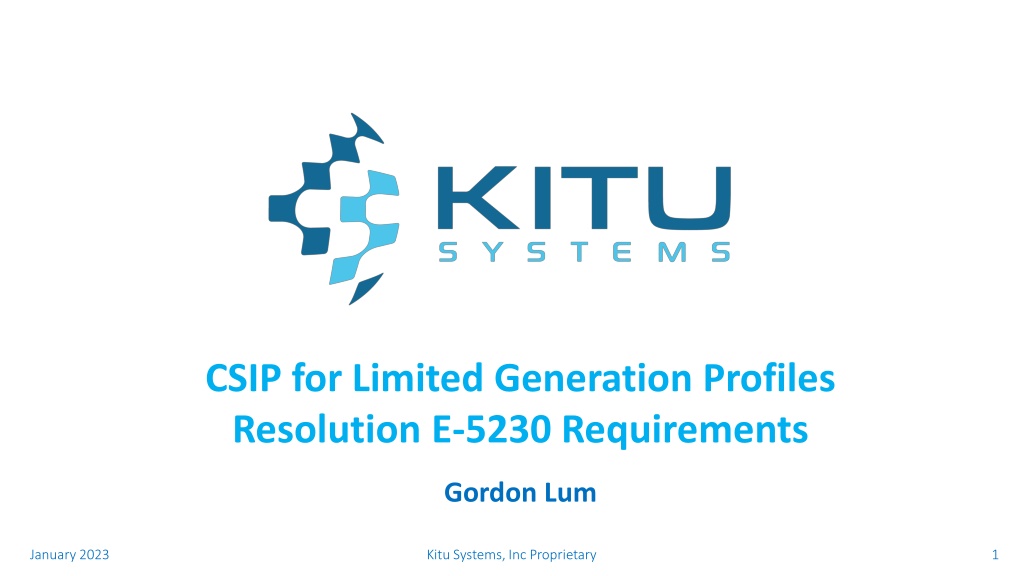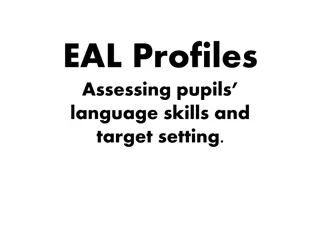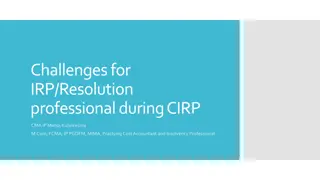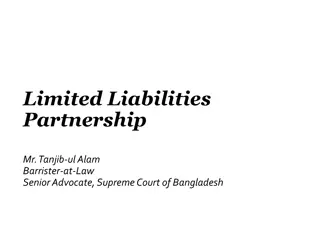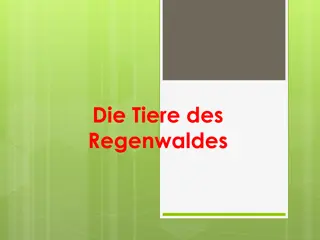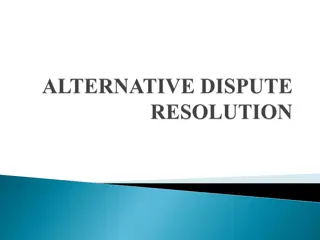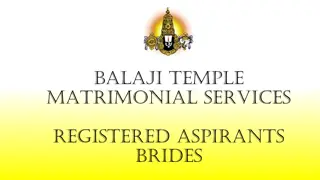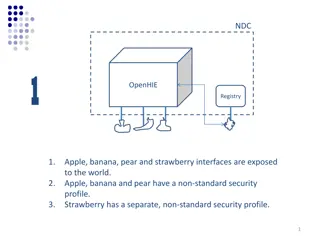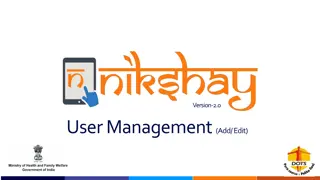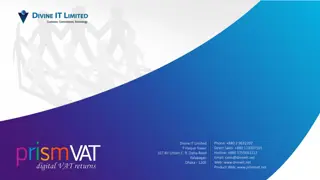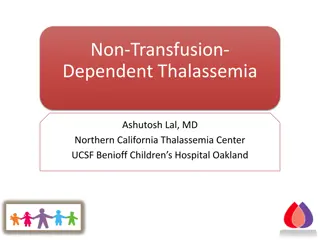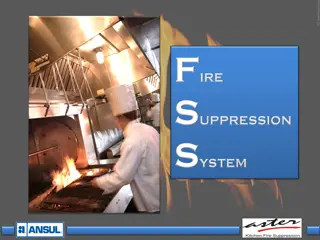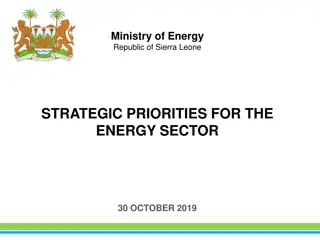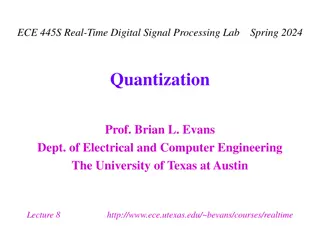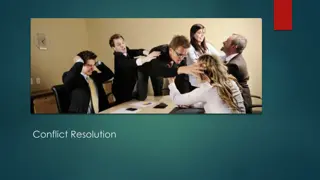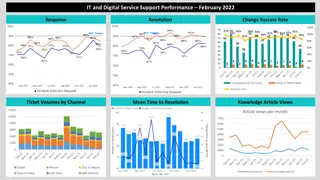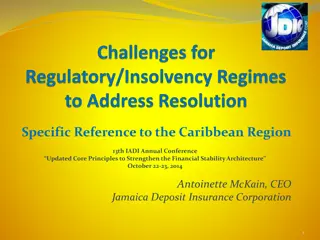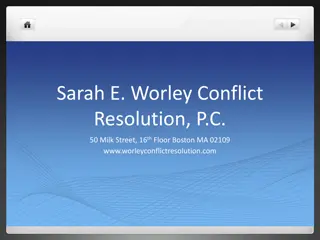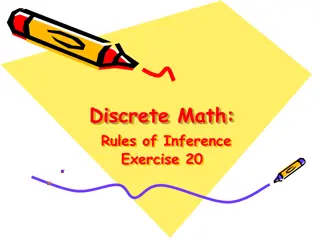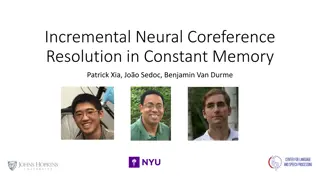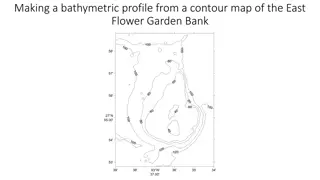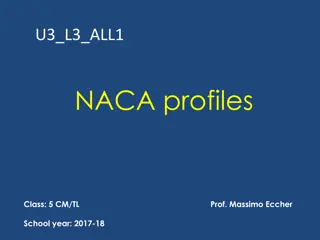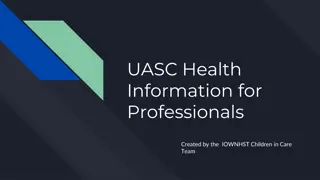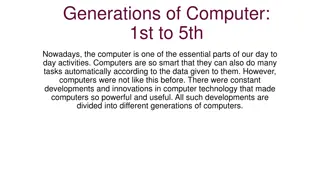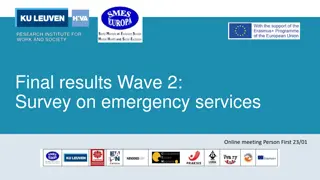Understanding CSIP Requirements for Limited Generation Profiles Resolution
This content delves into the essential requirements of CSIP for Limited Generation Profiles Resolution E-5230, particularly focusing on its relation to IEEE 2030.5 standards. It covers the basic requirements, support for specific functions like Limit Maximum Active Power Mode, and details of CSIP certification testing. The discussion also addresses the adequacy of existing CSIP testing for E-5230 and the scheduling aspects within IEEE 2030.5 events.
Download Presentation

Please find below an Image/Link to download the presentation.
The content on the website is provided AS IS for your information and personal use only. It may not be sold, licensed, or shared on other websites without obtaining consent from the author. Download presentation by click this link. If you encounter any issues during the download, it is possible that the publisher has removed the file from their server.
E N D
Presentation Transcript
CSIP for Limited Generation Profiles Resolution E-5230 Requirements Gordon Lum January 2023 Kitu Systems, Inc Proprietary 1
E-5230 CSIP & IEEE 2030.5 Support Do CSIP-Certified devices already support E-5230 requirements? Short Answer: YES Longer Answer: Review the contents of this slide-deck to verify this assertion. What are the basic requirements of E-5230 as it relates to IEEE 2030.5? Support for Phase 3 Function 3 Limit Maximum Active Power Mode Map to IEEE 2030.5 DER Control: opModMaxLimW Support for Phase 3 Function 8 Scheduling Power Values and Mode 288-hour format: 12 months with 24 events per month Use inherent Event scheduling mechanism of IEEE 2030.5 January 2023 Kitu Systems, Inc Proprietary 2
CSIP Requirements and Testing What are the relevant CSIP requirements related to E-5230 DER must support the opModMaxLimW function opModMaxLimW specifies real power output limit as a percentage of the Nameplate value. 100% = No curtailment. DER must be able to store at least 24 Events DER must comply with all IEEE 2030.5 Event rules What is tested during CSIP certification testing? Confirmation that DER can process opModMaxLimW event Communications verification using QualityLogic testing and SunSpec review Verification of DER storage of 7 Events (not 24) Verification of IEEE 2030.5 basic event processing (scheduling) Functional testing using UL1741SA -SA18 January 2023 Kitu Systems, Inc Proprietary 3
CSIP Testing Is the existing CSIP certification testing sufficient for E-5230? Short Answer: YES. CSIP testing already verified communications, basic scheduling, and functionality. The remaining question is whether the 288-hour format is supported. Can CSIP certified DERs comply with the 288-hour requirement of E-5230? CSIP requires the storage of at least 24 events, but CSIP testing only verifies storage of at least 7. The amount of event storage does not directly impact support for the 288-hour requirement. A DER with no storage capabilities can meet the 288-hour requirement by periodically polling the event schedule on the Server. CSIP uses a default polling rate of every 10 minutes, so it should be able to execute the 288-hour schedule if it maintains communications with the Server Stored events allow the DER to continue operating when there is a loss of communications with the server the DER has local copies of upcoming events and can act accordingly. Assuming a storage number of 7, and assuming the scheduled value changes every day, a CSIP certified device can ride through a communications outage of 1 week. January 2023 Kitu Systems, Inc Proprietary 4
Scheduling Overview of IEEE 2030.5 Events How is scheduling done in IEEE 2030.5 The basic building block of a DER scheduling is a DER Control Event DER Control Event contains the following: DER function (e.g., opModMaxLimW) DER function value (e.g., 75%) Start time in UTC (seconds since 1/1/1970) Duration in seconds UTC (seconds since 1/1/1970) is used. There is no concept of a calendar. Advantages: No need to worry about Time Zones, Daylight Savings Time, Leap Year, Leap Seconds, etc. Disadvantages: Not human friendly. No concept of daily, weekly, monthly, yearly. A schedule is a list of DER Control Events stored in a DER Program as a DER Control List DER s obtain the schedule by downloading (HTTP GET) a DER Program s DER Control List At most 1 event for the DER Control is active at any given time. Overlapping controls cause the superseding event rules to come into play If no event is currently active, the Default DER Control value is applied if it is defined. If no event is active and no Default DER Control was defined, the behavior of the DER is undefined. Once an event is created, it can not be modified only cancelled. January 2023 Kitu Systems, Inc Proprietary 5
Scheduling Overview of IEEE 2030.5 DER Programs How is a DER Program used in CSIP CSIP uses DER Programs to represent different nodes in the electrical topology. The System node (DER Program) represents the entire topology. A Transformer node represents all DERs on that transformer. A Service Point node represents all DERs on that service point. Utility servers will insert a DER Control Event into the appropriate node (DER Program) depending on which set of DERs they want the event to apply to. Note: A server can also create a DER Program that represents an arbitrary group, not just a topological group. January 2023 Kitu Systems, Inc Proprietary 6
Scheduling Basic Operations How Does Scheduling Work The Utility Server periodically creates a series of DER Control Events The Server adds these Events to the appropriate DER Program s DER Control List When each Event completes, the Server removes it from the DER Control List The DER Client periodically (every 10 minutes) polls the Server The DER checks the DER Control List of all the DER Programs it belongs to If a new event is found, the DER schedules it for activation and sends the appropriate responses (Received, Started, Completed, Cancelled, Superseded). When the event completes, the DER removes it from its internal event list. January 2023 Kitu Systems, Inc Proprietary 7
Scheduling Options How should E-5230 schedules be implemented? Scheduling is under the total control of the Utility server. There are many (maybe too many) ways to do this. Factors that influence how scheduling is done include: Scheduling complexity simple scheduling algorithms is generally better Resource efficiency using less is generally better Handling changes the simpler the better Operational convenience some scheduling methods may be more conducive to existing operations January 2023 Kitu Systems, Inc Proprietary 8
Scheduling Option 1 Option 1 Schedule a large number of future Events Example, in December, create all 288 Events for the next year. Advantages: Simple to do Need to do scheduling once per year Disadvantages: Uses a lot of resources to process all 288 Events Physical storage costs Transmission costs If changes need to be made mid-year, many pre-scheduled events need to be cancelled or supersede causing an even greater number of resources to be consumed. January 2023 Kitu Systems, Inc Proprietary 9
Scheduling Option 2 Option 2 Schedule a smaller number of future events Example: Schedule 1 month ahead Schedule 1 week ahead Schedule 1 day ahead Advantages: Uses fewer resources Easier to modify as the number of events to cancel or supersede is less Disadvantages: Must perform scheduling more often January 2023 Kitu Systems, Inc Proprietary 10
Scheduling Option 3 Option 2 Schedule on Change with Indefinite Events Example Create a single Event with infinite duration. This event will continue until cancelled or superseded. When it s time to change the value Create a new (future) Event with the new value and infinite duration. This Event will supersede the current Event. Suggest the new Event be created 1 day before it is scheduled to be active. After the new Event has started, the Server can cancel the old event and remove it. Create a new event with new value and infinite duration Advantages: Minimal use of resources. Only need to create new events if you want to change the value. Simple ad hoc scheduling. Disadvantages: Creating a new event that overlaps the current event triggers the IEEE 2030.5 superseding event rules that are sometimes non-intuitive. You need to verify that edge-case behavior is acceptable. January 2023 Kitu Systems, Inc Proprietary 11
Scheduling Option 4 Option 2 Use Default DER Control instead of DER Control Events Example Similar to Option 3, but using the Default DER Control instead of an infinite duration Event Server creates a Default DER Control with the current value of opModMaxLimW When the Server wants to change the value, update the Default DER Control with the new value. Advantages: Only need to modify the Default DER Control when a change is needed. IEEE 2030.5 Event rules do not apply, so it s simpler. Disadvantages: The CSIP polling rate is every 10 minutes, so it may take 10 minutes for the DER to realize the change in the Default DER Control. Requires reliable connection to the Server. If there is a communications outage, the DER will not be able to detect the change in the Default DER Control. Unlike DER Control Events, the Server does not get any Responses from the DER for changes to the Default DER Control status. January 2023 Kitu Systems, Inc Proprietary 12
Additional Scheduling Notes Scheduling Notes and Recommendations Try not to cancel events without cause Once an event is created, the contents cannot be modified it can only be cancelled. For a period of time, both the cancelled event and the new event exists in the DER Control List, so this causes an increased use of resources for both the Server and the Client. Try not to overlap events When events overlap, the IEEE 2030.5 superseding rules come into play. Some of the rules are non- intuitive, so make sure you understand all the consequences of creating an overlapping event. Try not to have gaps between events Define a Default DER Control to be activated when there is no active Event. If there is no active DER Control Event and no defined Default DER Control Event, the DER behavior is undefined. The DER may disable the control. It may use an internally defined default value. It may remember an earlier state and try to restore that state. You probably don t want to depend on undefined behavior. January 2023 Kitu Systems, Inc Proprietary 13
